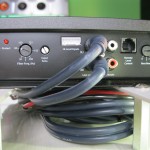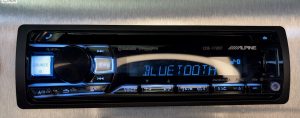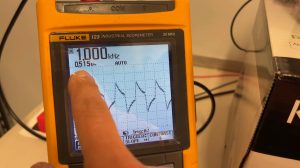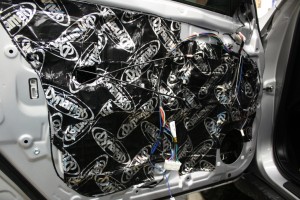2 ohm, 1 ohm, 4 ohm, series, parallel, bridging by Car Stereo Chick
Hello everyone, I felt I should make a video to give everyone a little better explanation of the difference between 2 ohm, 1 ohm, 4 ohm as well as some more info on series, parallel and bridging. This is the first video post I’ve done, so I was a little confused as to why my computer was mirroring the diagrams I was holding up, but my web guy fixed it (Thank you Scott!). By the way, if you like Scott’s work, check out his website here.




18 Comments
Hi there annie,
I got – two 12″ splx 122hx soundstream subwoofers
– two soundstream goliath tarantula XXX-6500 amplifiers
-two nsb 170 northstar batteries
I was wondering how do I wire the batteries from the main battery (car battery) and how do I wire the amp from the two nsb batteries?
Then eventually how do I wire the subs to each amp?
I am planning to configure it in my toyota tazz hatchback. The car has been dynamatted and prepared already. Now to start wiring. (I’m going to enter a sound off)
Awaiting your reply.
Nareash
Hi Nareash,
You really should probably only use one of those amps based on RMS of the subs (1000) and the RMS on the amp at 2 ohms (3000). You’ll need a battery isolator (you can click on the tech/instructions link to see the wiring diagram), but ideally you also want to upgrade your alternator to a high amperage alternator. That amp has a potential current draw of 460 amps. Most stock alternators handle anywhere from 70-180 amps.
Once you get your power situated you’ll want to use the 2 subs which are dual 2 ohm subs, wire each subs voice coils in series (will result in 4 ohm load per sub), then parallel the subs resulting in a 2 ohm load at the amp.
Good luck with the sound off. When building your box, I recommend using this software called Bass Box Pro. It will allow you to plot various outputs at different frequencies and design a high output enclosure.
Annie, I would like to first start off by saying that I really enjoy your website and your tutorial videos, they’re great! But I still have a question that needs to be addressed.
I currently am running a Kenwood KAC-7205 Amplifer and two Kenwood KFC-W12PS Subwoofers. My amplifier is rated 500 watts RMS x 1 bridged @ 4ohms, and each Subwoofer is 4 ohms. I currently have them wired in parallel. I understand the difference between series and parallel, and according to your video, since my amp is a 2 channel amp, my subs should be wired in series (which makes sense, because my amp does get hot). But my question is, since my amp is 500 watts RMS x 1 @ 4 ohms when bridged, shouldn’t it play stable at 2 ohms, rather than 1 ohm? Or does having my subs wired in parallel drop the ohm level two 2 ohms, and then the load is cut in half again to 1 ohm because it’s bridged?
Hi Derik,
Your last sentence is correct. Essentially it seems the final impedance is cut in half as far as how the amp sees it. It’s the way the manufacturer rates their amps that can make it confusing. The “500×1 @ 4 ohms” is basically the same thing as saying 250×2 @ 2 ohms. So yes the amp is technically stable at 2 ohms – 2 ohms per channel – OR 4 ohms combined when run as bridged/mono. When you run the amp bridged, whatever the final load of your enclosure/subs are, the amp is sharing that impedance per channel. So if you have a 2 ohm enclosure wired to a bridged amp, the amp is seeing 1 ohm per channel. Hope that clarifies things for you.
Hi Annie, I just went back over this blog and found the answer to how to wire DVC’s. I over looked it. Sorry.
Steven
LOL, I’m so focused on thoroughly answering each comment, I didn’t see the next comment.
Hi Annie, I have an 06 Chevy Colorado Crew Cab. I have a Memphis 1500 D MONO amp. Rated at 1500 RMS @ 2 OHMS. I am planning on running two shallow 10″s in a custom built portted box under the back seat. I am having this done by a professional dealer/installer. I am sure the 10’s will be DVC’s, I am not sure what brand they will be recommending yet. I did not quite understand the end of your video on how to wire this set up for MONO. Could you please clairify this for me? Keep in mind I will likely have them detune a little so at full vol the speakers will stay happy and not get pissy. LOL
My installers seem to think that 4 ga Tsunami will handle my Memphis Bell 16-MC600D and the 1500D together. After seeing part one of this blog, they will be putting in 0 ga per my request. I normally do my own stuff but I don’t have the time and the labor isn’t too bad. I will do the big 3 myself.
Thank you very much for your time and help.
Steven
Hi Steven,
I’m glad you’ve found the blog helpful and I’m really glad they upped it to 0 gauge, just make sure it’s the good stuff, 100% oxygen free copper. Let me clarify the bit about wiring dual voice coil subs to a mono amp. If they are definitely going to be dual voice coil, they need to be dual 2 ohm. You can wire each sub’s voice coils in series. Then Parallel. Check out this quick little diagram I made for you. If they end up doing single voice coil, just get single voice coil 4 ohm. In a crew cab Colorado, you may want to consider something like Alpine’s flat type R’s rated at 600 watts RMS a piece with a single 4 ohm load. I hope the system rocks!
Annie
Hi.
I just want to say, that your website is awesome. Thanks for that.
I am thinking to connects this subwoofers (3 of them): http://www.woofersetc.com/p-9524-lac129d-boss-12-dual-4-ohm-outlaw-series-subwoofer.aspx
To this amplifier:
http://www.bossaudio.com/auto/class-d-monoblock-audio-amplifier-4000-watts-dst4000d-disrupt/
will it work and will it be any good?
Hi Nerius,
I sent you an email to get some more specific info regarding what kind of outcome you are looking for. In general, Boss is not a quality brand and I would avoid it. I’m glad you enjoy the website!
dear ultracoolcarstereochick,
this video had exactly the info i needed about the impedance and also about why running 2 separate amps for 2 subs requires tuning. i was originally thinking that if at a later time, i could always just add another sub and another amp…but now i know why it could sound like crap…not to mention that i’m inspired to go back to the gym. i used to have 17″ arms (like 2 years ago) but you would totally kick my ass in an arm wrestling match:)
-billy
? I have 2 alpine type r 12″ 2ohm dvc and want to bring them to 1ohm how do I do that or should I
don’t do it! Watch this video on ohms, there is a bit on what running at 1 ohms is like.
Hey Trey,
oops, I didn’t see you said you had TWO of them. So you can’t anyways. You need a mono amp that puts out 1000 watts RMS at 2 ohms, like an Alpine MRX-M100. Wire each sub in series, THEN parallel. This will result in a final 2 ohm load.
Hi i have 2 kicker dual voice coil 4ohm subs and want to know the best way to wire them at 2ohm instead of 4ohm and if so when i hook them upto a mono block and put both subs onto the one mono block does that mean the ohm jumps up to 4ohm because i have two 2ohm subs wired into the one channel or do they stay at 2ohm ?
Thanks
Hi Moe,
If you have two dual 4 ohm subs and you wire them in parallel (positive to positive, negative to negative) you are dropping the impedance for each sub down to 2 ohms. When you then once again tie both positives and both negatives together to a mono amp you are paralleling again, dropping the impedance down to 1 ohm. Most amps are not 1 ohm stable and even the ones that are don’t sound very good at 1 ohm. The less resistance, the more unstable the amp becomes. It lets out more power, but with less control.
You will probably need to series the subs (after you’ve paralleled the voice coils 1st). Series will result in a 4 ohm load which will be safe for either a mono amp or a 2 channel that is being bridged. To series, you connect the negative from Subwoofer #1 to the positive on Subwoofer #2. Then, use the positive from Subwoofer #1 to go to the positive of the amp and the negative from Subwoofer #2 to go to the negative of the amp.
Awesome! This makes a lot of sense.
However, my setup is different in that I have a Kenwood 2 channel amp that is rated 250 Watts x 2 (2 ohm)/500 Watts x 1 (4 Ohm Bridged) which (to my simple mind) says that there is higher resistance when bridged than not bridged. This seems opposite of what you (and many other sites) say. I would have expected when bridged the amp’s ohms to be cut in half not go up.
What am I missing? And is it safe to wire in series like you described here?
PS – why do amps smell so bad when they are new?
Hi Alan,
What sub or subs do you have? You are correct that when a 2 channel amp is bridged, the amp sees 1/2 the impedance. So what that rating, 500×1 at 4 ohms, means is that the amp will put out 500 watts with a 4 ohm load when bridged. For example, if you have a single voice coil 4 ohm sub is hooked up to the amp bridged the amp is actually seeing 1/2 that resistance or 2 ohms. I think they rate it like that to make sure that people know not to give the amp anything less than a 4 ohm load if you are bridging it.
Since series always increases resistance, it should be safe regardless of what sub or subs you have, but there may be a better way to do it. Let me know what you have for subs ([email protected]) and I’ll tell you the best way to wire it. Thanks for checking out the site!
Why do amps smell bad when new? I don’t know, I never really thought of them as smelling bad 🙂 Maybe it’s whatever they use to coat the electronics or the smell of the glue on components inside. I can tell you they smell a lot worse when they’re burnt, same with subwoofer voice coil.